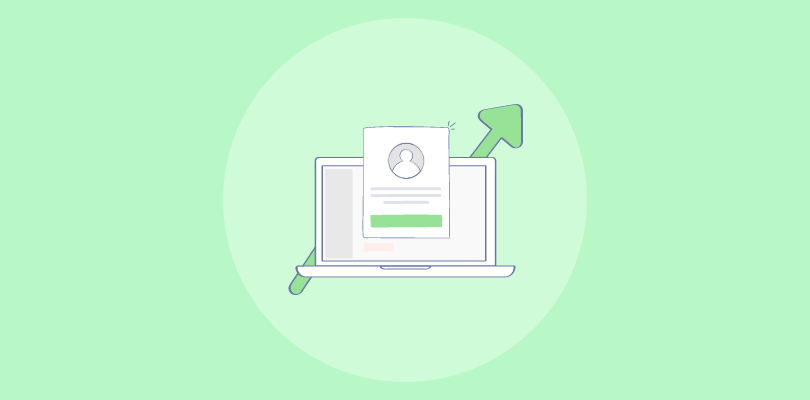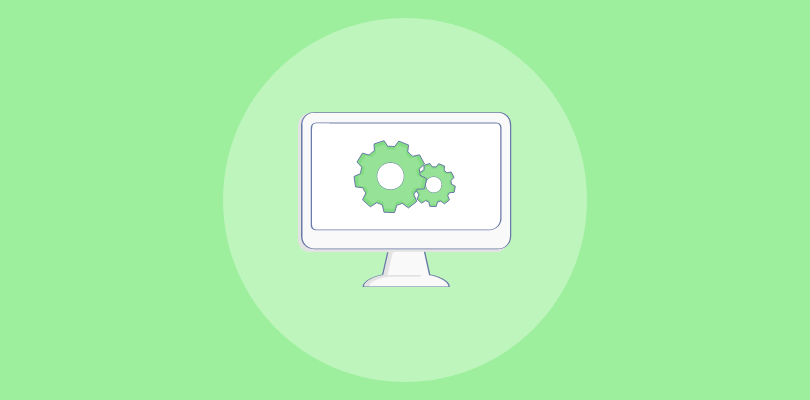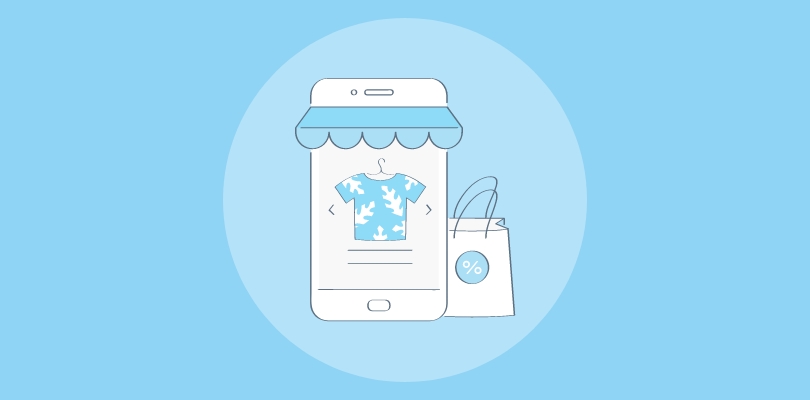
Did you know, on average, only about 2-3 out of every 100 people who visit an online store end up buying something?
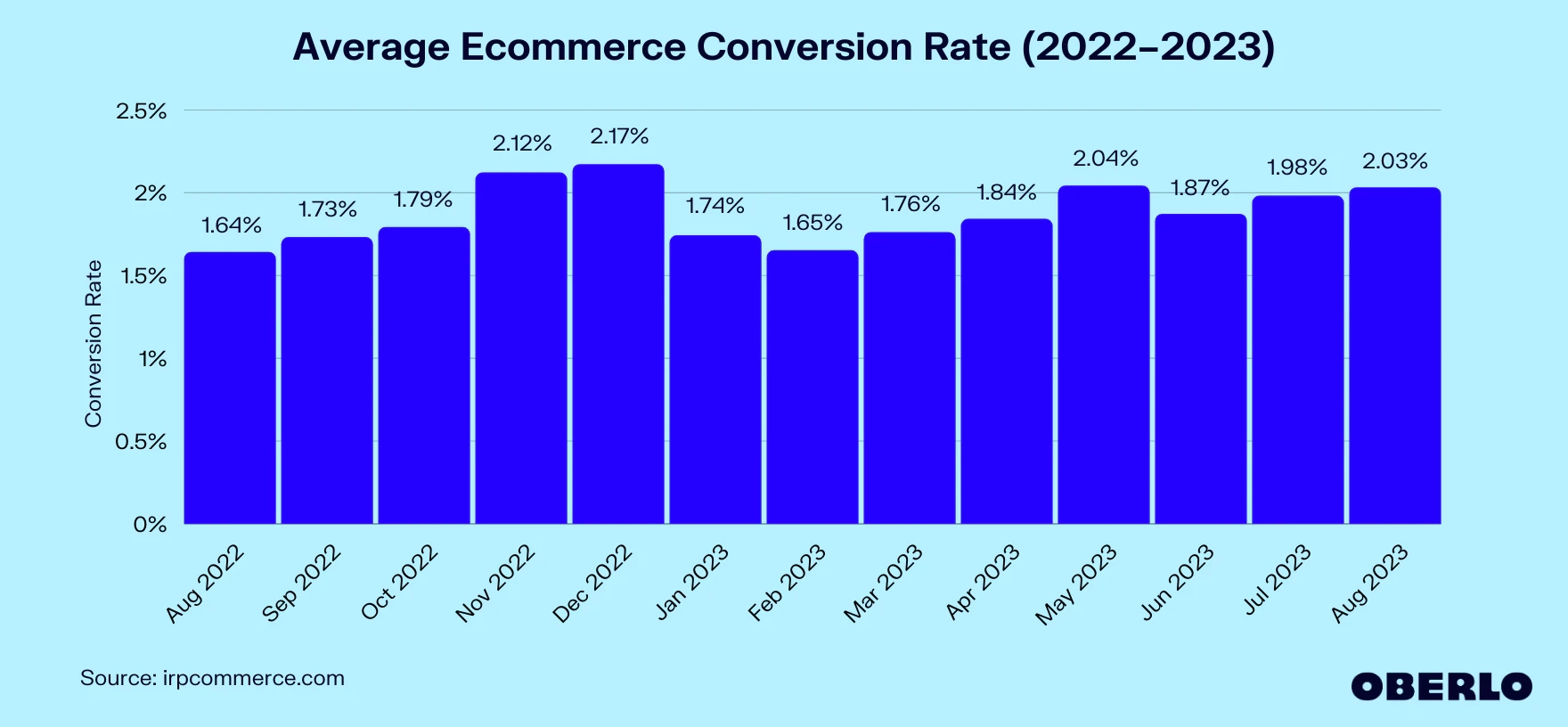
So, even though you might be spending money on your ecommerce conversion rate optimization (CRO), you’re missing out on potential sales if they leave without making a purchase.
So, what can you do to convince people to buy from your store when there are so many other online stores out there? It’s not that complicated, and the key to success is to make improvements to your website step by step.
When you do this properly, you can increase your sales without spending a lot of money. In this blog, we will share some of the most effective ecommerce conversion rate optimization strategies to help you take your online store to the next level.
Let’s dive in.
What Is a Good Ecommerce Conversion Rate and How It Is Calculated
Typically, ecommerce conversion rate is about 2.5-3%. So, even if you’re doing everything correctly, you can expect to make a sale only about 2-3% of the time.
It’s important to aim for a conversion rate above the average. Once you reach that goal, you can then focus on using more advanced strategies to further improve your conversion rate.
Calculating conversion rate is pretty simple as well.
Conversion rate is determined by dividing the number of conversions by the total visitors (tracked ad interactions) that can lead to a conversion during a specific time frame.
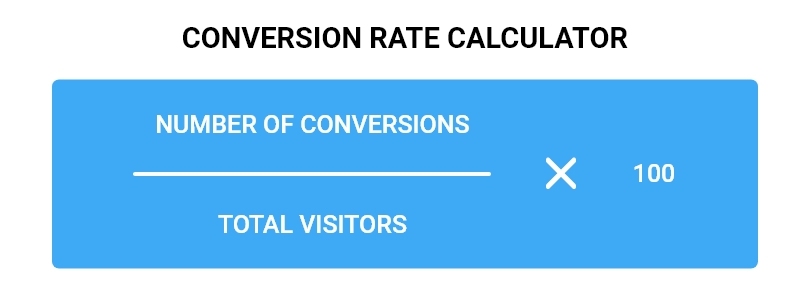
For instance, if you had 50 conversions out of 1,000 interactions, your conversion rate would be 5%, as (50 ÷ 1,000)*100 = 5%.
10 Ways to Skyrocket Your Ecommerce Conversion Rates
If you want to increase conversion rate optimization for ecommerce above the average, follow these tricks and tested strategies:
1. Optimize Your Checkout Process
Almost 25% of shoppers abandon their shopping carts because they are required to create an account, and about 18% leave a website because the checkout process is too complicated or lengthy.
This clearly highlights the importance of providing a smooth and hassle-free checkout experience for shoppers. To achieve this level of conversion rate optimization for ecommerce, there are a few steps you can take.
Firstly, consider enabling a guest checkout option so that visitors can easily complete their purchase without the need to create an account.
Secondly, it is recommended to limit the number of steps in the checkout process to two or three. By displaying a progress indicator, you can keep customers informed about their current position in the checkout process.
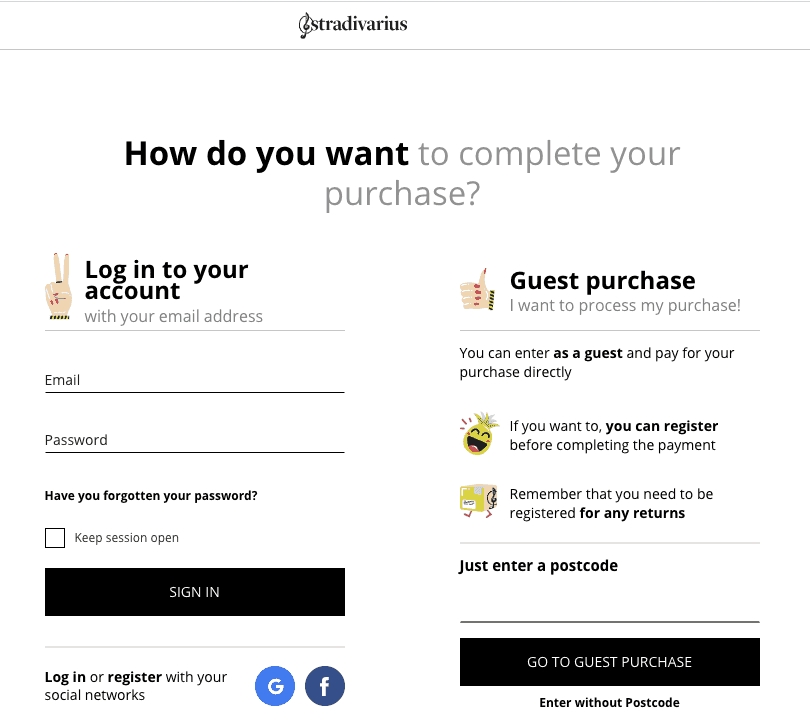
Finally, when collecting information from shoppers, only ask for relevant and necessary details, ensuring that the ordering process can be completed quickly.
2. Use High-Quality Visuals
Instead of using stock images and low-resolution pictures of your products, it is highly recommended to avoid them altogether for a better ecommerce conversion optimization.
By displaying detailed images or videos, you allow shoppers to get a virtual sense of what they are considering to purchase. When customers have a better understanding of your product, they are more likely to make a purchase.
The most effective approach for your ecommerce conversion optimization is to provide a 360° view of your product.
Capture multiple images from different angles and present them creatively on your product pages. Also, if you are selling sunglasses or fashion accessories, including pictures of models wearing those items can help shoppers visualize the product in a more interactive way.
3. Offer Free Shipping
The word “FREE” has a natural allure that attracts shoppers.
Online shoppers consider free shipping as one of the top incentives to make more purchases. Additionally, high shipping costs lead to cart abandonment for 49% of shoppers.
All these findings emphasize the effectiveness of offering free shipping to improve ecommerce conversion rates.
If incorporating free shipping directly into your business model is not feasible, there are alternative strategies to consider.
One option is to factor the shipping cost into the product price, allowing you to offer “free shipping” without impacting your bottom line.
You can also use popup tools to display free shipping codes in exchange for visitors’ email addresses. This way, you can build your email list and entice customers to make a purchase.
4. Provide Detailed Product Descriptions
Having good descriptions for the stuff you sell online is really important. When people shop on the internet, they can’t touch or see the things in person. So, product descriptions are their guide to know more about the product before buying.
If the description is too basic or missing information, it may make people unsure and they may not buy the products.
A good description tells customers about what the product can do, why it’s useful, and how it fits into their life. It also answers common questions people might have. It helps customers feel sure about what they’re buying and makes them more likely to buy it.
5. Work on Mobile Optimization
Making your online store work phenomenally on mobile phones and tablets is super important because more and more people are using these devices to shop online.
If your website is set up to work nicely on mobiles, it means visitors can easily look around and buy things without any trouble. A good design adjusts to different screen sizes, so everything looks good no matter what device someone is using.
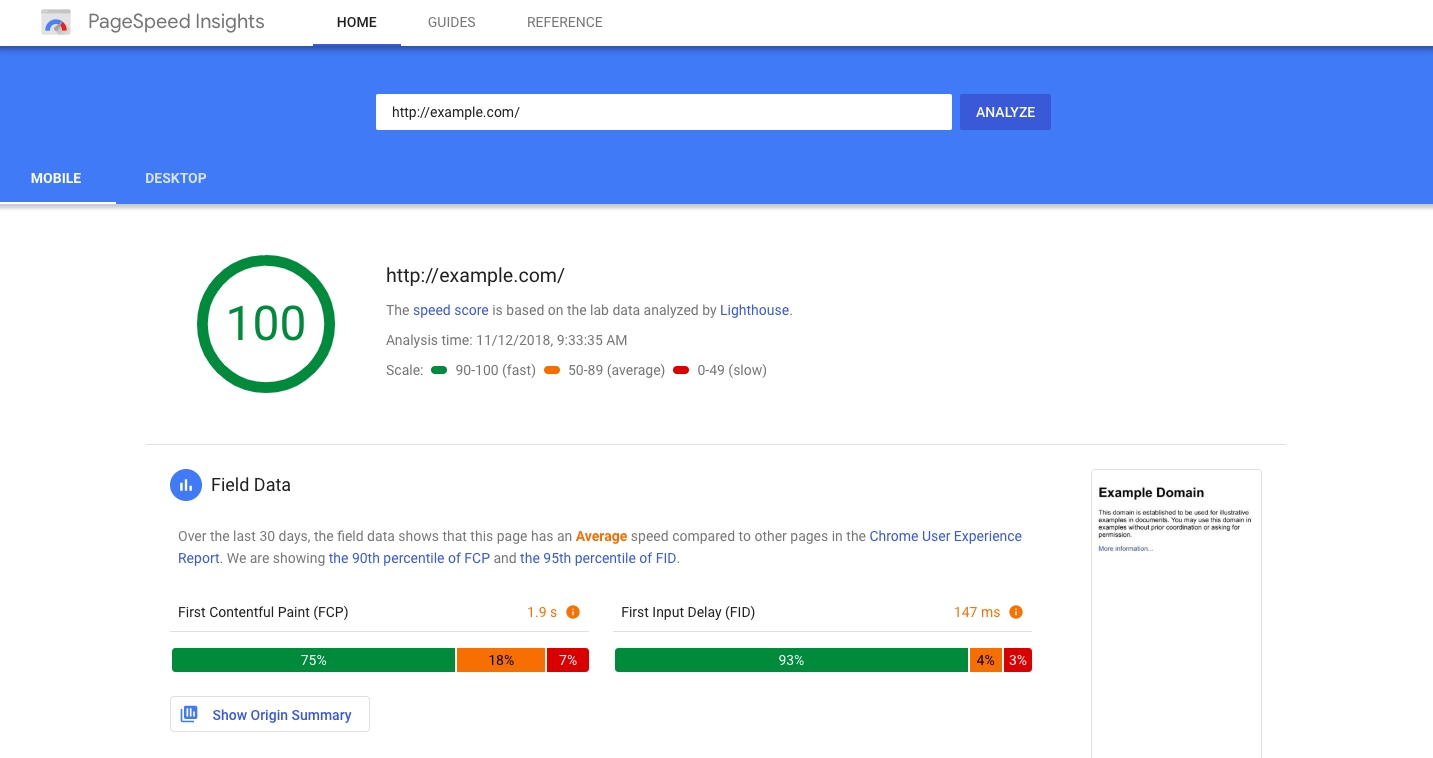
You can test your site’s speed using Google PageSpeed. If there are red alerts in some areas, identify what’s hampering the speed. Make sure to see your hosting plan and choose a plan that offers a turbo speed. Also, you should optimize your images, thumbnails, and videos so your site loads up in no time.
6. Provide Live Chat Support
Customers can often become overwhelmed or confused when presented with multiple products and services on your website. This can lead to questions and concerns about the product, pricing, or payment methods.
To address these issues and provide shoppers with instant and accurate assistance, it is highly recommended to incorporate live chat support, such as ProProfs Chat, on your website. This feature enables your support agents to resolve customers’ issues in real-time, fostering trust and improving your brand image.
In addition to reactive support, it is essential to adopt a proactive approach. By monitoring shoppers’ behavior on your website, you can initiate conversations with them, offering assistance and guiding them towards making a purchase.
7. Add Social Proof
Including customer reviews and ratings for your products instills a feeling of confidence and reliability. Research shows that nearly 90% of customers review online feedback before making a purchase.
To facilitate this, it is essential to provide a review section where customers can share their valuable input. This not only enhances credibility but also fosters trust among customers.
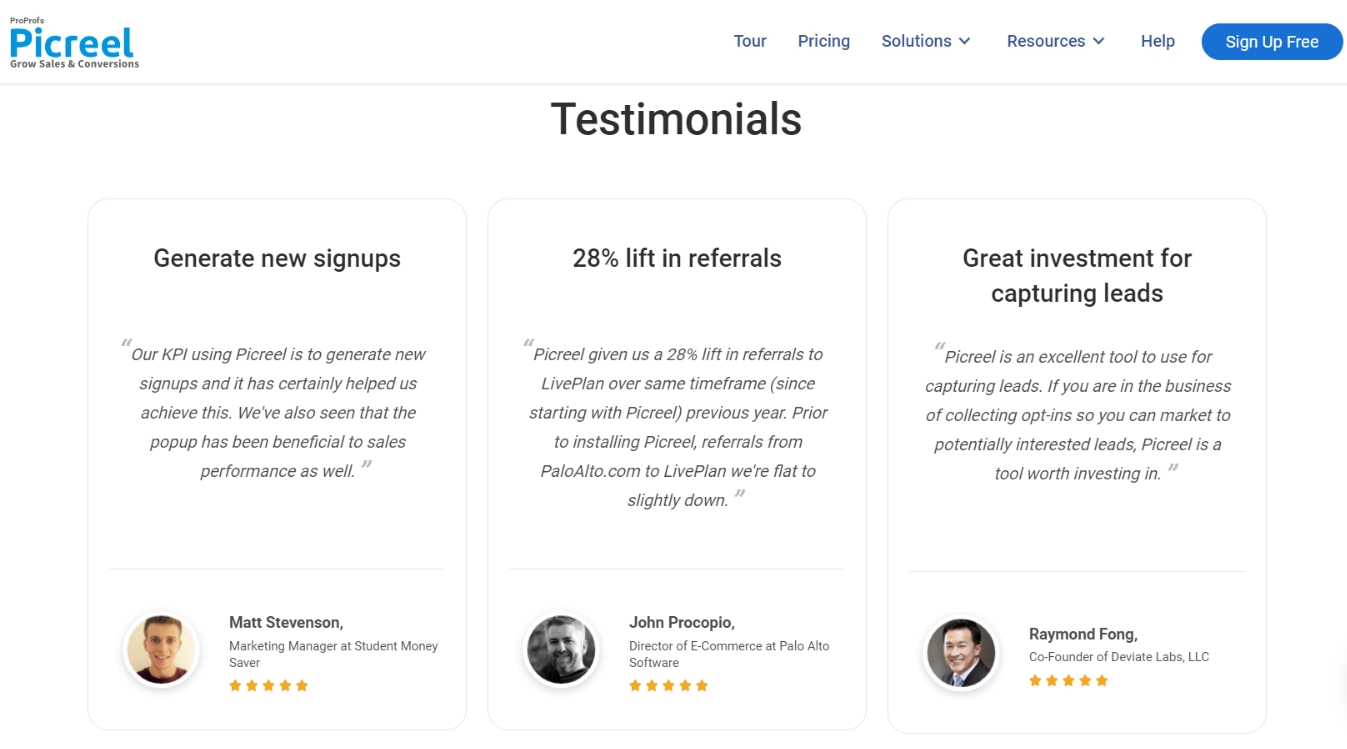
Also, featuring testimonials from loyal customers on your homepage can be impactful. Personal recommendations have a strong influence on purchase decisions, and showcasing positive experiences can further build trust and increase ecommerce conversion rates.
8. Use Clear Calls-to-Action
A clear and compelling call-to-action (CTA) is vital for boosting ecommerce conversions. It simplifies the visitor’s path, eliminating confusion about what to do next.
Whether it’s a “Buy Now” or “Add to Cart” button, a distinct CTA visually stands out, guiding users toward the conversion goal. On top of that, a strong CTA, using persuasive language and design elements, generates urgency or excitement, encouraging immediate action.
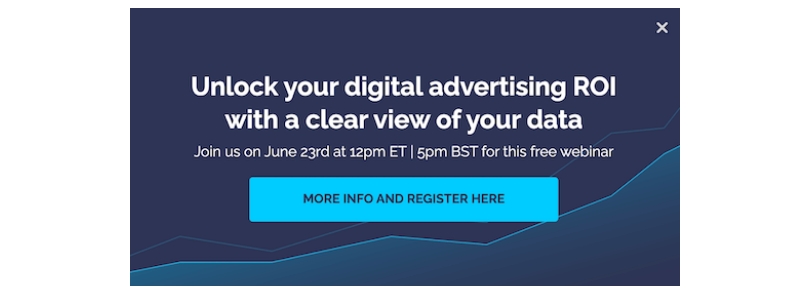
Strategically place CTAs throughout the site, in banners, pop-ups, and related suggestions, to maximize their impact, capture attention and guide visitors toward conversions.
9. Work on Email Capture
Implementing an email capture strategy includes collecting visitor email addresses to establish direct communication and guide potential customers toward making purchases.
This approach creates an engaged leads database, enabling the delivery of targeted and personalized emails with valuable content and exclusive promotions. Email capture also supports retargeting those who showed interest but didn’t convert.
You can use an email capture tool as it plays a crucial role in enhancing efficiency by streamlining the process, customizing prompts, and offering insights through tracking and analysis. In this landscape, Picreel is the perfect lead capture tool, utilizing exit-intent technology to present engaging offers and prompting visitors to provide their contact information.
10. Conduct A/B Tests
A/B testing is crucial when you are looking to increase ecommerce conversion rates. It involves experimenting with slight variations in different elements and assessing their impact on conversions.
Conducting A/B tests allows you to experiment with various website elements, such as the headline on your landing page, graphic placement, testimonials, popups, CTAs, and more. You can divide the traffic equally between two versions, directing half to page A and the other half to page B.
By measuring the performance of both pages, you can quickly identify which changes have positively influenced your conversions.
5 Best Tools for Boosting Conversion Rates on Ecommerce Websites
Let’s take a look at 5 of the most popular tools that can help you boost conversions on your ecommerce website:
1. Picreel
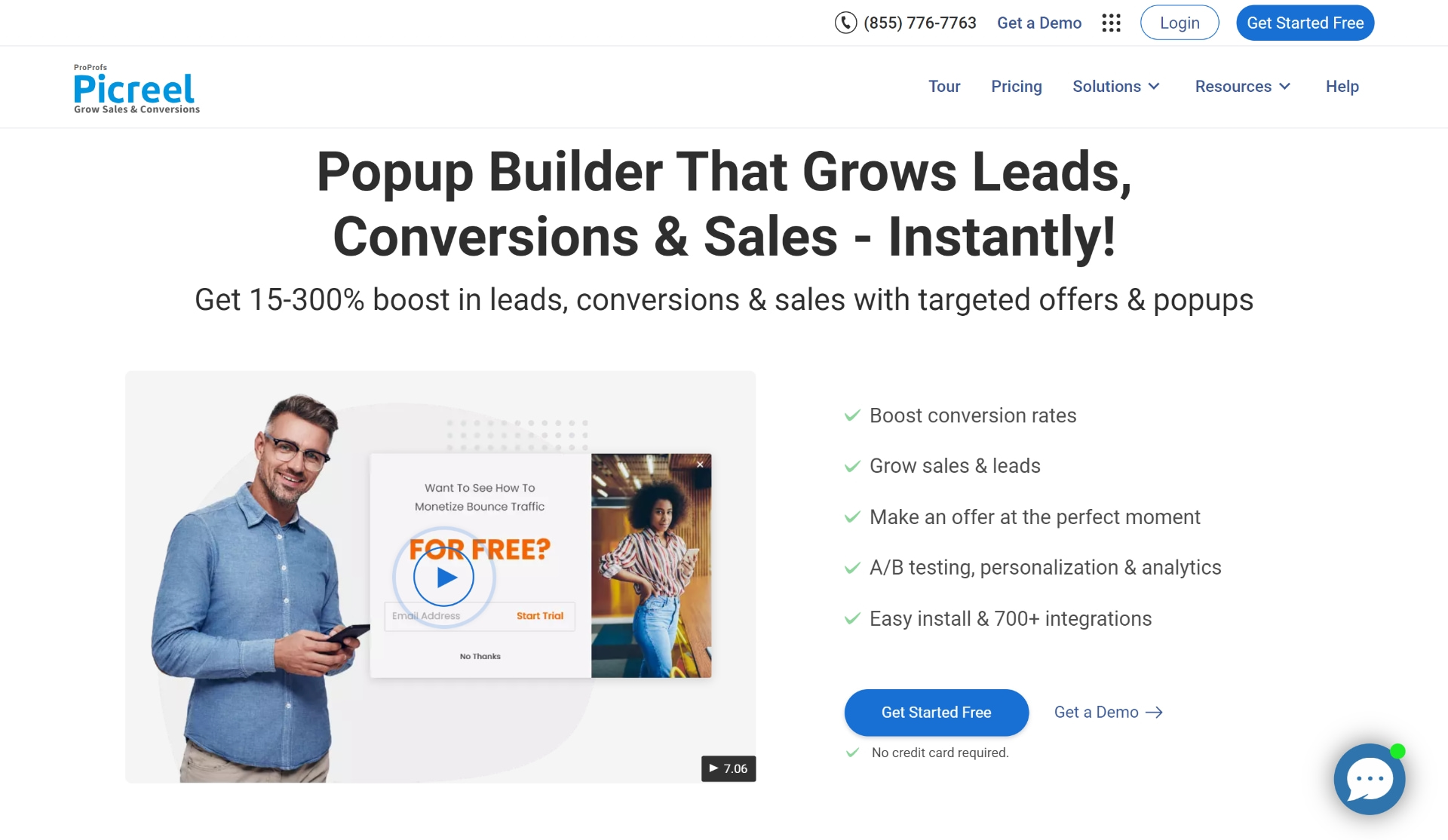
Picreel is a popup conversion rate optimization tool that is specifically designed for eCommerce businesses to engage customers with appealing popups.
With Picreel, creating unique popups is a breeze as it provides a repository of over 100+ popup designs, and you can customize them in no time. Advanced trigger and targeting options enable you to display popups to your chosen audience at the perfect moment. The detailed and intuitive dashboard facilitates analyzing real-time statistics and tracking conversions.
On top of that, Picreel incorporates an A/B testing engine allowing you to experiment with different popup variations and find the best-converting design.
This can increase ecommerce conversion rate by 15% to 300%. Also, the tool seamlessly integrates with over 700+ sales, CRM, and email marketing tools, enabling a smooth transfer of captured leads.
Key Features:
- Engage leaving visitors with targeted offers using exit-intent technology for increased ecommerce conversions.
- Experiment and optimize pop-up designs, messages, and offers with Picreel’s A/B testing capabilities.
- Customize visually appealing pop-up templates to align with your ecommerce brand and audience.
- Enhance conversions with advanced targeting options, delivering personalized pop-ups based on user behavior.
- Ensure a seamless user experience with mobile-responsive pop-ups for both desktop and mobile users.
- Gather valuable customer feedback with exit surveys to make strategic improvements and boost ecommerce conversions.
2. Hotjar
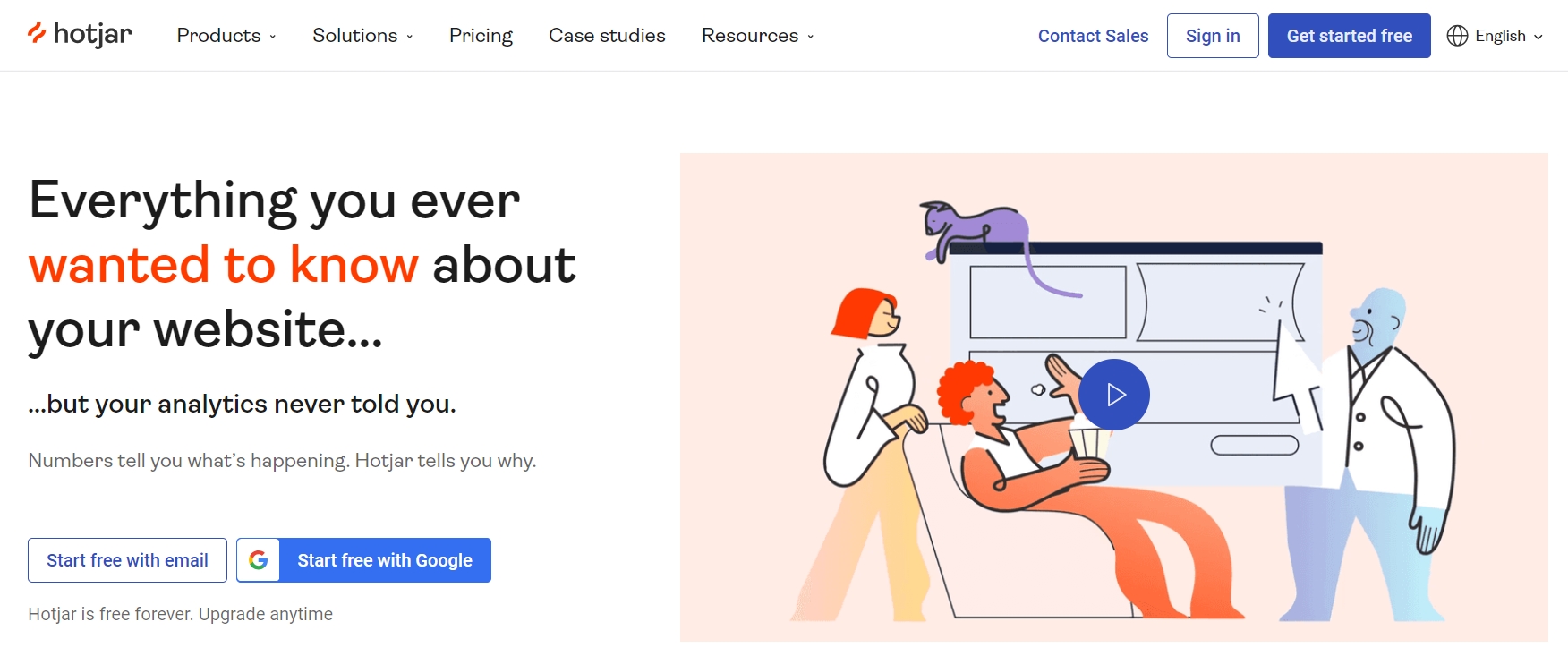
Hotjar, a versatile tool, offers insights into user behavior through features like heatmaps and session recordings. Marketers use it to visualize interactions with email campaigns and website content, refining strategies by identifying improvement areas.
Its tracking and user journey analysis pinpoint conversion pain points, aiding in making informed decisions for optimization.
Businesses employing Hotjar enhance user experience, streamline conversion funnels, and boost email conversion rates. It’s an invaluable asset for maximizing the effectiveness of email marketing efforts.
Key Features:
- Uncover user insights through heatmaps, session recordings, and surveys with Hotjar’s comprehensive analytics tools.
- Visualize user interactions on your website to identify areas for improvement using Hotjar’s intuitive heat-mapping capabilities.
- Gain valuable user feedback by deploying surveys strategically on your site with Hotjar’s user-friendly survey tools.
- Understand user behavior and preferences with session recordings, allowing for targeted optimization of your website with Hotjar.
- Streamline the optimization process with Hotjar’s powerful toolset, including feedback polls and customizable surveys.
3. Optimizely
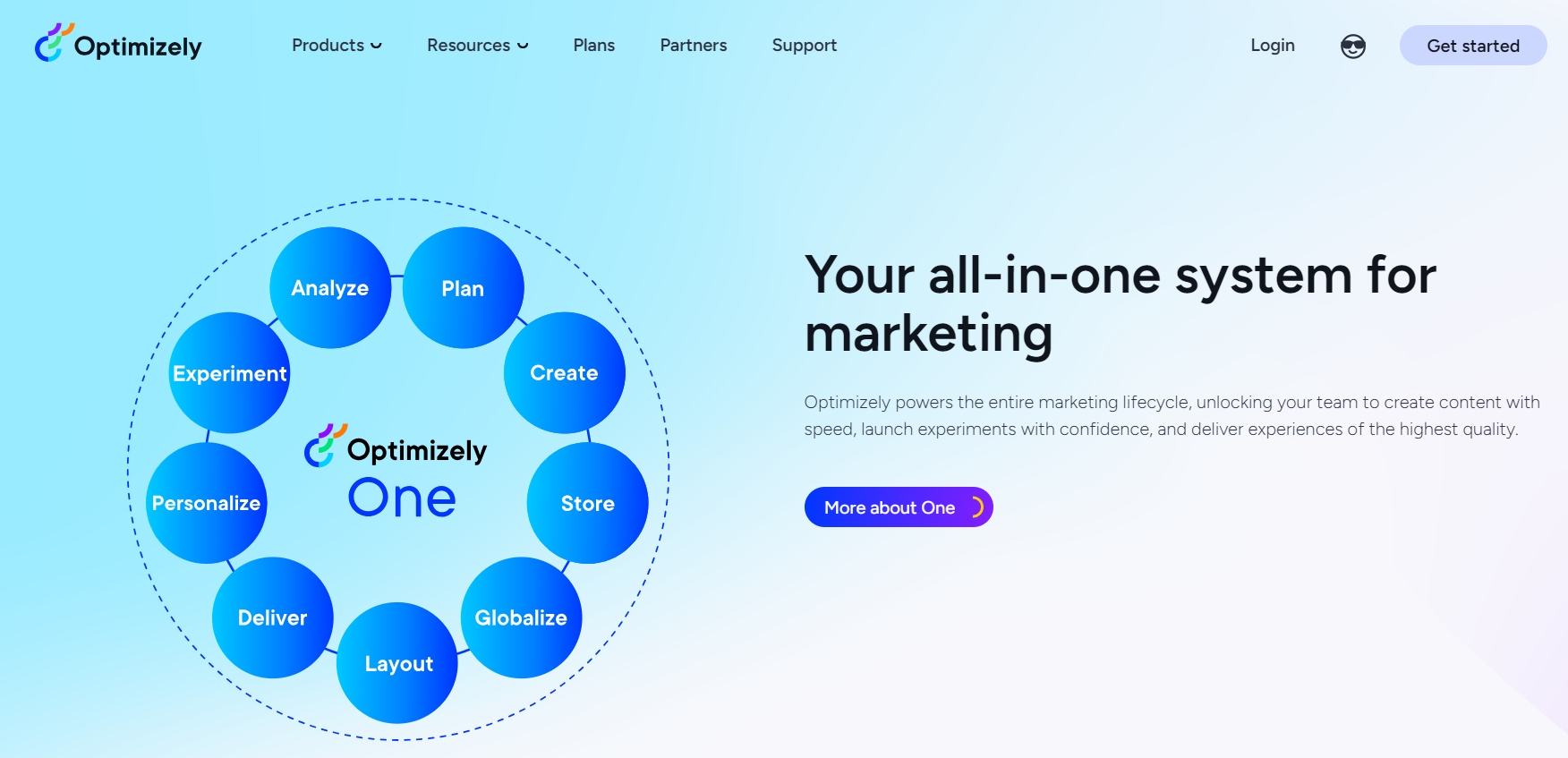
Optimizely is an outstanding email conversion rate optimization tool, offering a robust platform for A/B testing in email campaigns. Marketers benefit from its user-friendly interface and comprehensive features, allowing experimentation with elements like subject lines and call-to-action buttons.
The iterative testing process enables businesses to make data-driven changes, resonating better with their audience and leading to increased email conversion rates. With real-time results and an effective approach, Optimizely empowers businesses to optimize email strategies, enhancing overall campaign performance and driving higher conversion rates.
Key Features:
- Optimize your digital experiences with ease through A/B testing and experimentation using Optimizely’s powerful platform.
- Experiment with various elements in your campaigns, from subject lines to call-to-action buttons, using Optimizely’s A/B testing capabilities.
- Enhance user engagement by refining strategies based on real-time insights gathered from experimentation with Optimizely.
- Improve overall campaign performance and drive higher conversion rates by leveraging Optimizely’s user-friendly interface.
4. Google Analytics
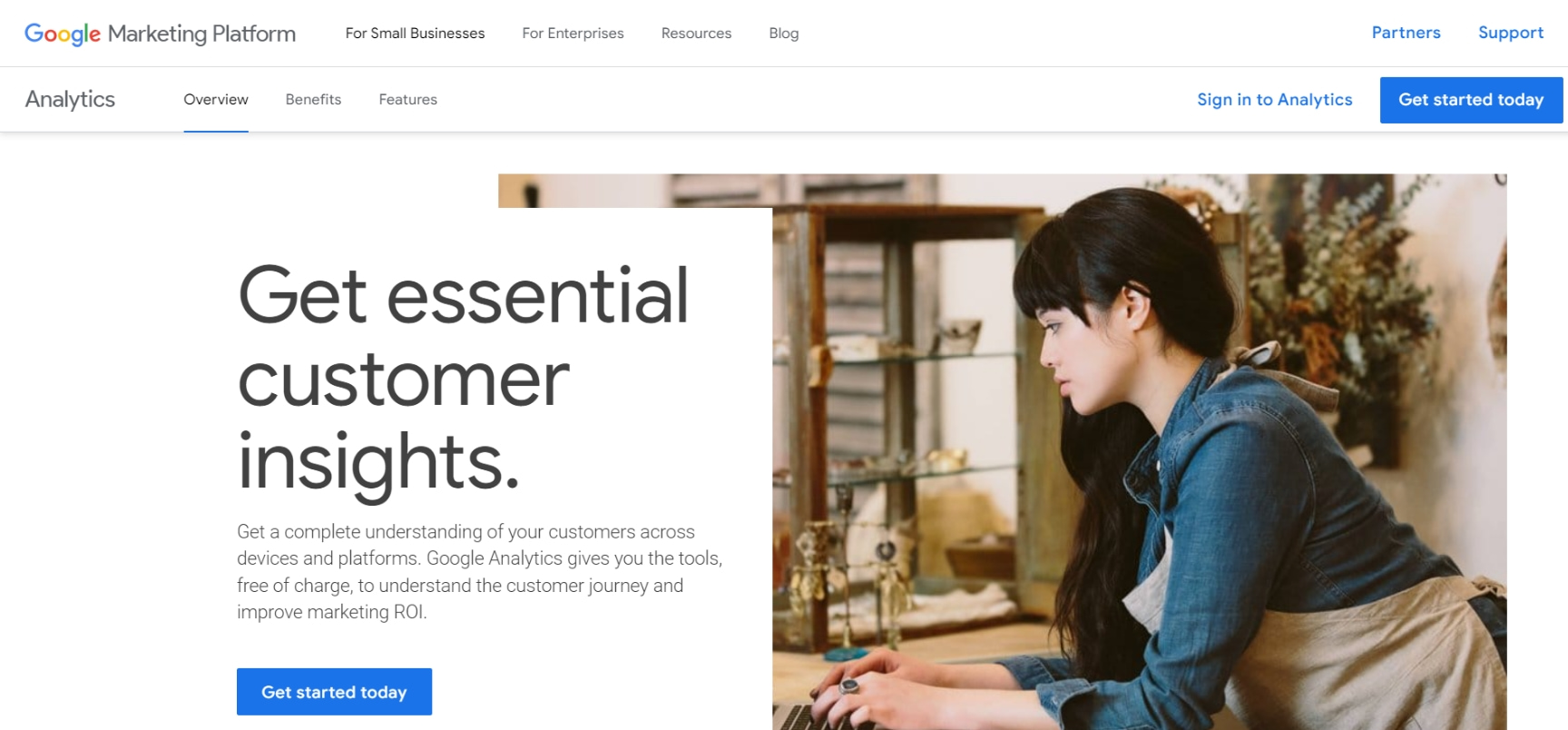
Google Analytics is an ideal email conversion rate optimization tool, offering robust analytics to track the performance of email campaigns. Providing detailed insights into user behavior, engagement, click-through rates, and conversion metrics, it allows marketers to identify strengths and weaknesses.
It offers a comprehensive view of the customer journey, facilitating informed decisions for refining email strategies. With real-time tracking and reporting features, it proves invaluable for optimizing email campaigns, improving conversion rates, and enhancing overall marketing success.
Key Features:
- Gain detailed insights into user behavior and website performance with Google Analytics’ robust analytical capabilities.
- Track and analyze user engagement, click-through rates, and conversion metrics to refine email strategies effectively.
- Obtain a comprehensive view of the customer journey, facilitating informed decisions for email content and design optimization.
- Harness real-time tracking and reporting features to enhance email campaigns and drive better conversion rates with Google Analytics.
5. Google Tag Manager
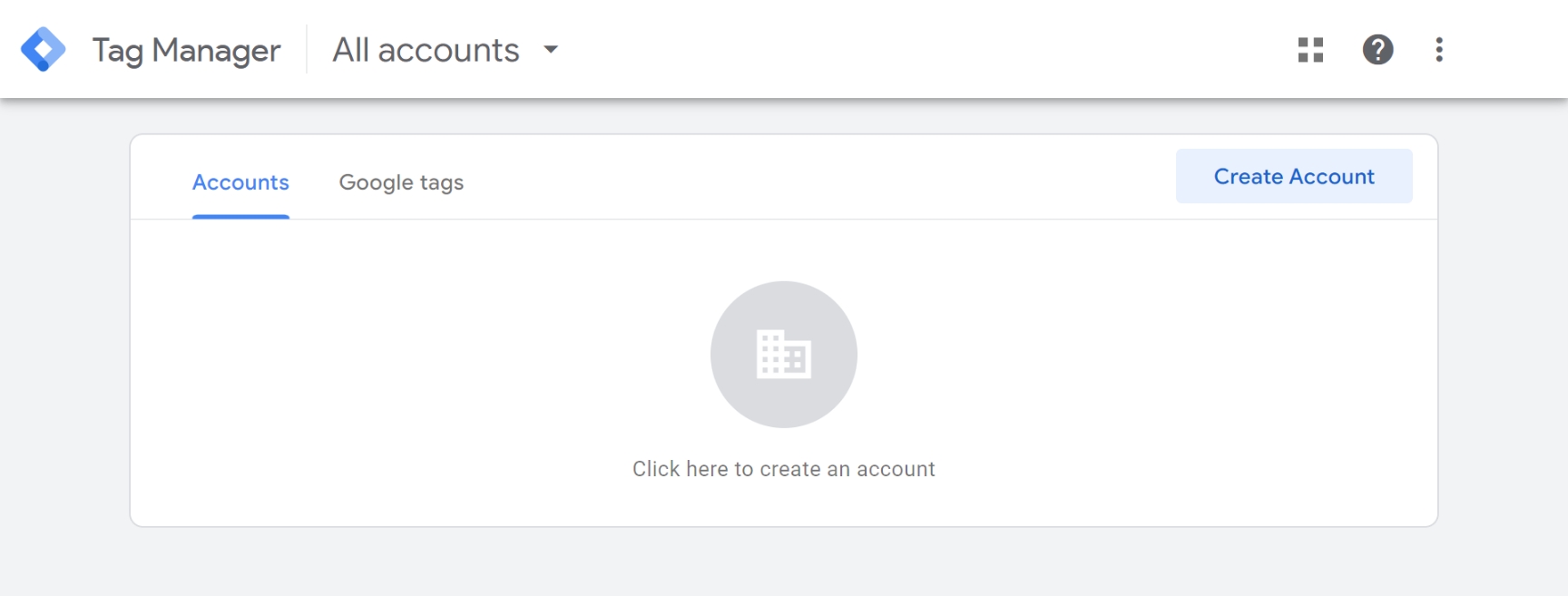
Google Tag Manager is a key tool for email conversion rate optimization, offering efficient tag management without intricate coding. Marketers can seamlessly integrate and update tracking codes for email campaigns, gaining insights into user behavior and conversions.
With its user-friendly interface, Google Tag Manager simplifies data tracking and analysis, enabling businesses to make informed decisions for optimizing email strategies. Its flexibility and real-time control over tags make it invaluable for enhancing the effectiveness of email campaigns and driving higher conversion rates.
Key Features:
- Efficiently manage and deploy tags without intricate coding using Google Tag Manager.
- Seamlessly integrate and update tracking codes for email campaigns, gaining insights into user behavior and conversions.
- Simplify data tracking and analysis with Google Tag Manager’s user-friendly interface.
- Make informed decisions for optimizing email strategies with the flexibility and real-time control over tags provided by Google Tag Manager.
Read More - 35+ Best Ecommerce Marketing Tools for 2024
Ecommerce Conversion Rates Challenges and How to Overcome Them
Knowing the common mistakes in ecommerce CRO can really help boost your sales. Make sure you’re doing things right by avoiding these three errors.
High Cart Abandonment Rate
Ecommerce businesses often face challenges that impact their conversion rates. One common obstacle is the high cart abandonment rate, where users add items to their cart but fail to complete the purchase.
How to avoid:
To overcome this, businesses can implement a cart recovery strategy. Sending personalized follow-up emails with incentives like discounts or free shipping encourages users to reconsider and finalize their purchases. Additionally, optimizing the checkout process for simplicity and user-friendliness is crucial.
Also Read: 21 Proven Tips to Fight Shopping Cart Abandonment
Lack of Mobile Optimization
Another challenge arises from the lack of mobile optimization. With a growing number of users shopping on mobile devices, a non-optimized website can result in a poor user experience and lower conversion rates.
How to avoid:
To address this, businesses should ensure their ecommerce site is fully responsive and tailored for mobile users. This involves implementing a mobile-friendly design, easy navigation, and a seamless checkout process. Regular testing across various devices helps identify and resolve any mobile-specific issues.
Ineffective Product Descriptions and Images
Ineffective product descriptions and imagery pose yet another challenge. Poorly presented or inadequately described products can lead to user hesitation and reduced conversion rates.
How to avoid:
To tackle this, businesses should enhance product descriptions with clear and compelling content, emphasizing key features and benefits. Including high-quality images from multiple angles and, if applicable, videos showcasing the product in use can significantly improve the user’s understanding.
Drive Conversions With the Best Strategies and Tools
Now that you have a checklist to improve ecommerce conversion rates, it’s time to fix any issues in your conversion funnel.
There isn’t a set standard for what a good eCommerce conversion rate is, so aim to achieve more than what you currently have and steadily work your way up.
Focus on using the right tools to optimize your conversions. You can rely on tools like Picreel to target visitors who are about to leave your site. Make sure to test different elements of your website to create a better user experience and increase ecommerce conversion rate.
It’s your turn now to start getting more conversions!
FREE. All Features. FOREVER!
Try our Forever FREE account with all premium features!




